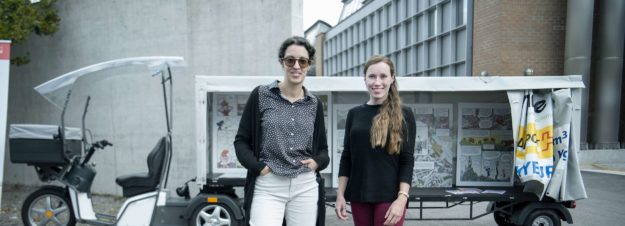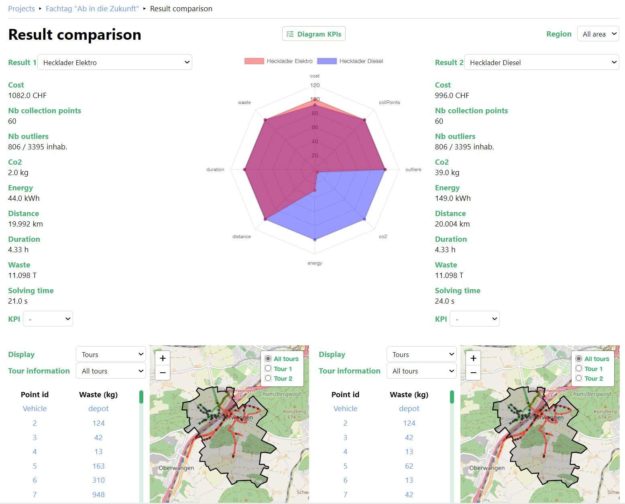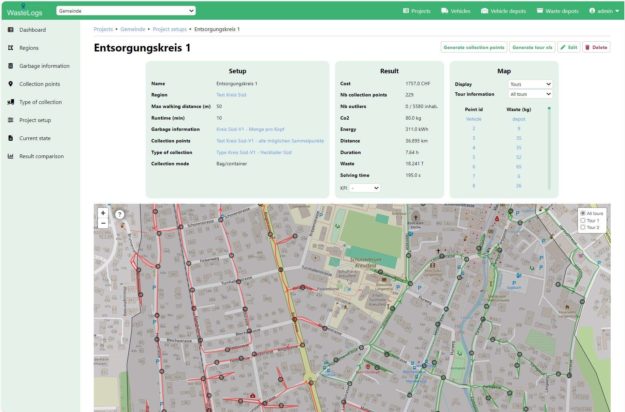Research Story
Most municipalities in Switzerland still run weekly or twice- weekly curbside household waste collection services. But heavy waste collection vehicles are a major source of emissions and noise pollution, which is not good news for the environment and residents. The Decision Support & Operations Research Group (DS&OR), which is affiliated to the Department of Computer Science at the University of Fribourg and is also part of the Smart Living Lab, has developed an interactive tool to minimise the impact of municipal waste collection. Using optimisation algorithms, the tool lets the local authorities choose the collection strategy that best suits their needs while improving system performance and sustainability.
“Having access to data like waste volume, road network configuration and population size means that we are able to present the authorities with informed, data-driven arguments on how they can improve their waste collection systems”, explains Dr Vera Fischer, former senior researcher with the DS&OR Group. This project launched by the DS&OR group is called ‘Decision support for efficient and sustainable waste collection' and was implemented in partnership with Schwendimann AG, a waste transport, management, and disposal company. Other members of the research team included mathematicians, business infor- matics experts and economists, and the Smart Living Lab helps fund the project. “Schwendimann AG services some thirty municipalities in the Greater Bern area. It created a spin-off, System-Alpenluft AG, a waste management consultancy specifically for the local authorities and their road maintenance departments which wanted a high-performance tool that would help its customers make informed decisions”, Dr Fischer explains.
Waste collection remains a major challenge for the local authorities because it is not only about keeping public areas clean but also about minimising the environmental impact of this key service.
Vera Fischer
A project funded by Innosuisse
Innosuisse, the Swiss innovation promotion agency, saw that the project had potential beyond the partner firm needs, and offered to co-fund it. Dr MeritxellPacheco Paneque, who specialises in mathematical modelling for logistics, transport and mobility applications, offers an insight into the project, “We’reworking on mathematical models that can be used to optimise waste transport and collection”, adding, “Our algorithms can also be used in other projects andfields like delivery systems”. Of the thirty municipalities served by Schwendimann AG, six were selected for the pilot tests to validate the collection systems. The findings from these trialswere then used to develop the interactive tool and its optimisation algorithms.
The tool can be used for any municipality, no matter its size or number of inhabitants. If the data is available, it can be fed into the system we have developed
Vera Fischer
An alternative with electric vehicles
The DS&OR research group considered three collection solutions: the conven- tional system with its large, rear-loading lorries; a system made up of collection points where the public disposes of their waste in containers or compactors; and a collection system where small electric vehicles collect the waste, deposit it at intermediate disposal depots, where the conventional refuse lorries pick it up. This last option was tested in the field. Waste was collected by electric vehicles similar to those used by Swiss Post. “We wanted to find out how quickly they filled up”, Dr Fischer explains. “We also wanted to gauge public reaction to these smaller, slower and quieter vehicles.”
Development of an interactive application
One of the products generated by the partnership with Schwendimann AG is an interactive application. The company’s spin-off System-Alpenluft AG is already offering it to customers so that they can obtain a quantitative comparison for the three collection systems. This means that the authorities are able to base their choice of system on indicators like costs, performance, fuel consumption and sustainability. The partnership, which is now over, has enabled the DS&OR group to further develop and hone its know-how and expertise. According to Dr Fischer, “We now want to continue our research and improve these algorithms for scientific publications and other fields of application.”
We can factor in the size of the local authority’s vehicle fleet or weigh up the possibility of purchasing lower-emission vehicles. The resolution algorithm remains agile, adapting to the criteria and data that are fed into it.
Meritxell Pacheco Paneque
Text: Sophie Roulin
Translation: Elaine Sheerin
Images: Sonia Villegas
Contact
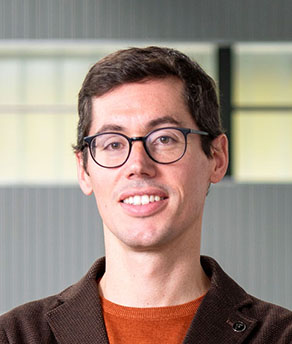
Bernard Ries
-smart houses or cities
-modeling, simulations and algorithms
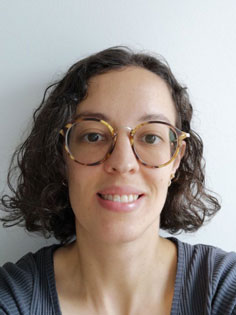
Meritxell Pacheco
-modeling, simulations and algorithms
-interactions and design processes
